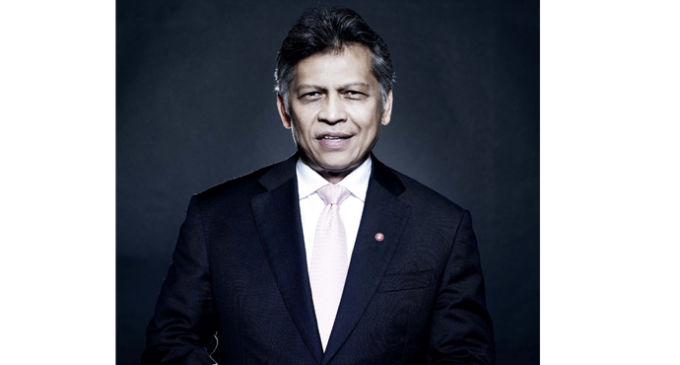A Review of Myanmar Prospects: Surin Pitsuwan (Former ASEAN Secretary – General)

Dr Surin Pitsuwan,Former Foreign Minister of Thailand, served as secretary-general of ASEAN from 2008-2013. An alumnus of Thailand’s Thammasat University and Harvard, he is currently emeritus professor at the former. At 2014 International Media Conference held March 10-12 by Hawaii-based East-West Center Dr Pitsuwan gave a talk on ASEAN Issues to Watch in 2014. The TODAY magazine got to interview ASEAN veteran Dr Pitsuwan, still influential in Thai politics, on ASEAN role on the part of Myanmar and its transformation in progress as follows:
What role do you feel is likely to be played by Myanmar during the coming five years?
Myanmar’s transformation is extremely fast, but it’s a good sign. I should expect help from its democratization and reconciliation process so as to support the ASEAN chair responsibility being borne by Myanmar. Reconciliation process means reconciliation among political forces and among the ethnic groups. The political reconciliation is going well. As a result of ASEAN cooperation its Market, Connectivity and Network and well-recognized global role are open to Myanmar for exploitation. No turning back on the part of Myanmar would hopefully give impetus to genuine reforms. Most ASEAN countries are moving forward, and then backward for some time: their progress is not constant but the trend remains positive. It occurs to me that Myanmar is on the path to become more participating, more committed and more transparent.
As a former ASEAN secretary-general, do you think Myanmar is on the right path especially as to ASEAN chair, 2015 elections, AEC and so on?
I think it is, but Myanmar must work hard to gain great benefit from ASEAN orbit. Moreover many ASEAN members must work for regional adjustments like mutual agreements and standardization to gain benefit from the international community. Adjustments include not only hard infrastructure like more electri-fication, communication, ports and airlines but also legal framework and soft infrastructure like human resources. Attracting foreign involvement should mean Win-Win because Donation isn’t much of a principle nowadays. All investments are for profit. An investor would like to know what is in it for him to gain. For foreign investors to come in it is important that they believe in Myanmar’s soft infrastructure and be put at ease about their investments. Among ASEAN countries adjustments are in need, and in progress too.
President U Thein Sein is in a similar period to that of Thailand’s General Prem Tinsu-lanonda, when he took power and initiated a lot of reforms. He concentrated on car, tourism, rice exports, and coastal develop-ment. What sectors do you think are in order for Myanmar to emphasize?
General Prem went strategic in regard of Thailand’s long-term economic development, including car production. He opened up the country for international carmakers to build their plants which were very cost-effective. Prem’s aim was to have the eastern coast of the country developed, so had the whole eastern coast, from Bangkok up to Cambodian border, built as a new economic industry zone. It was a very big scheme the like of which is perhaps being considered by Myanmar. However it may well be reviewed from a new perspective.
Inside ASEAN, Myanmar borders on Thailand whose industrial sector is substantially developed with capacity and other supportive factors. So Thai-Myanmar border area develop-ment should be brought under consideration as it will bring along infrastructure, capacity and skills also. Myanmar doesn’t need to build extensive infrastructure alone. Re-export via Thai ports is possible as Myanmar border is only 10-20 km away. Result: resolution of employment problem and exporting of commo-dities.
The phrase “Low-Hanging Fruits” is in use at ASEAN, meaning Quick Wins are to be grasped first. This idea of having industrial zones established along the Thai border should do Myanmar good. The same was true in NAFTA case: Mexico built industrial zones along US border using the latter’s technology, management, knowledge, infrastructure and networks.
It was called Maquiladora Concept dating back to 1956. It was exploitation of bilateral collaboration based on geography: that is the use of a neighbour’s capacity on the other side of the border. Via Thailand, Myanmar should be able to penetrate ASEAN market inclusive of Vietnam, Malaysia, Indonesia, Singapore, etc.
What about Dawei deep-sea port project?
The Project is way too big, I think. A great amount of investment, technological knowledge and infrastructure is needed while it would take 30-50 years to become fully operational in the long term. So what is manageable should be taken up, and this may probably have been Myanmar government’s option. Morever the special industry Zone Kyaukphyu is being built by China, and Thilawa Special Industry Zone by Japan. The Dawei Project is too big to be practicable yet for the country’s limitations in regard of export, job creation and industrial production. Thus a consideration of Maquila-dora Concept is currently needed.
By Thailand’s developmental experience what should be prioritized in the coming five or 10 years in Myanmar?
Agribusiness and marine products for con-sumption should be given a boost in production. Foodstuffs are always a reliable option. Why?
World population stands at seven billion today and is set to reach nine billion by 2050. Here exportable foodstuffs, domestically sourced and processed, are meant. Another priority should go to creation of job opportunities.
Industries requiring more labour rather than more technology should be encouraged Thailand has been built up on this model, which makes for more jobs, and more consumption and exports. Myanmar in possession of natural resources to a large extent should deem tourism development very important. Thailand in the 1960s began it all through the development of hospitality industry and human resources. The prospects for Myanmar’s tourism industry are great.
./wp-content/uploads/2018/10/Emirate-Online-TDY.png)

















There are no comments at the moment, do you want to add one?
Write a comment